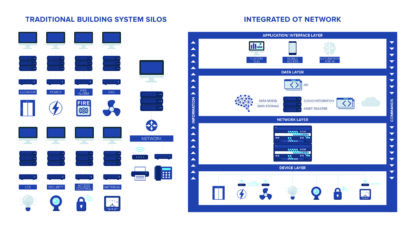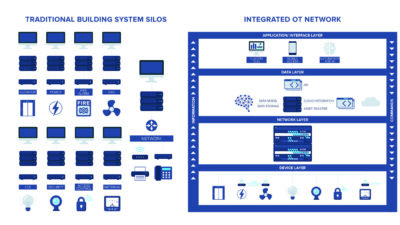Building automation systems are the norm these days. In fact, integration of HVAC, lighting and security systems into a building's central nervous system is a common scenario, especially in new construction. Now, the brain is becoming more and more aware of its body's lower extremities—namely the boiler system.
Building automation systems are the norm these days. In fact, integration of HVAC, lighting and security systems into a building’s central nervous system is a common scenario, especially in new construction.
Now, the brain is becoming more and more aware of its body’s lower extremities—namely the boiler system. And with good reason—integrating a boiler with BAS not only provides more efficient control of the boiler, thus saving energy and money, it also prevents damage to a boiler, prolonging its life.
According to Ted Ondo, application engineer with Combustion Services & Equipment, Pittsburgh, properly automating a boiler system can increase the life of the boiler by as much as 25%. By using a modulating burner that integrates directly with the BAS, building system staff can maintain a safe operating temperature range, bringing the temperature up and down gradually—a much more efficient option to operating the boiler on a start/stop basis. The effect is much the same as a car getting better gas mileage by maintaining a consistent speed with gradual acceleration and deceleration, rather than performing frequent starts and stops and flooring the gas pedal. Additionally, starting a boiler cold-on can cause thermal shock, resulting in expansion and even a cracked boiler or tube.
“We can’t impress enough on these operating engineers that you just don’t shut these things off when you don’t think you need them,” Ondo says. “That seems to be what happens even with a [programmable] system in there. Regardless, our attempt is to maintain efficiency and long life.”
Taking control
Once you’ve realized the benefits of automating your boiler system, the next steps are determining what you want your system to do and making it perform to your liking, says Eddie Caddell, energy management specialist for Hanover County Schools in Virginia. Caddell oversees the boiler system for 20 schools, and the network’s roughly 20 boilers are split between two automation systems. Caddell takes the do-it-yourself approach to system management and has automated boiler systems completely on his own, performing the engineering and even writing the software. As such, he knows exactly what he wants out of a system and is able to customize it appropriately. “Being an energy management specialist, I watch the system very closely and I can fine-tune it, where a manufacturer or subcontractor or building automation contractor really can’t spend the time to tune a system the way it should be tuned,” he says.
With his experience and a commitment to clearly defined goals, it’s no wonder that Caddell deems control as the most important consideration when choosing boiler and automation options. “I feel that you need total control of the boilers,” he says. “Certain manufacturers don’t like to give a BAS total control of their boilers. They only want to give [the BAS] an enable and disable capability but not control of the firing rate of the boilers. I would make sure that it’s written in a specification that you can do that.”
Integrating boilers into your BAS is yet another step toward a more cost- and energy-efficient building, and the ability to customize and control your system will allow you to make the most of this integration.
Benefits of boiler automation
More efficient operation
Longer boiler life
Ability to set and monitor appropriate temperature range and firing rate
Customization



